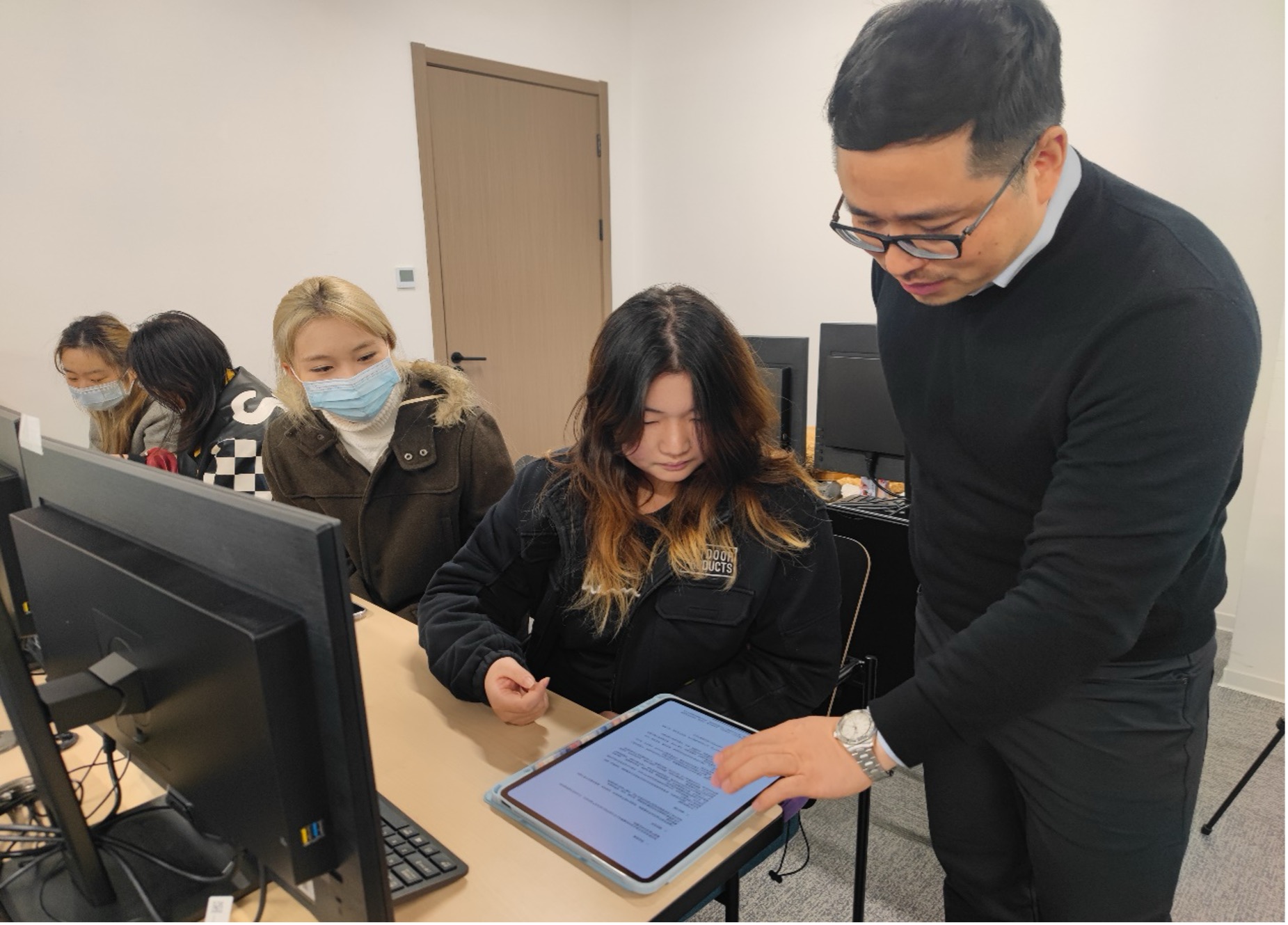At 16:35 on the afternoon of 30 December, Mr Wang Kan, General Manager of Shanghai Kunlian Information Technology Co., Ltd., was invited to the Xianxia campus of the International Institute of Creative Design (IICD) to deliver a lecture entitled Prospects for Integrated Development of the Metaverse and Artificial Intelligence. During the event, he not only shared insights into the industrial layout and the progress of metaverse development across various regions, but also thoroughly discussed key topics such as technical frameworks and multi-technology integration, major technology applications, immersive user experiences, and cross-platform compatibility.

The rapid growth of metaverse platforms, supported by AI technology, is creating an interactive, communicative, and user-friendly alternate dimension. By integrating multiple technologies such as 3D graphics, physical simulations, artificial intelligence, and cloud computing, the metaverse combined with AI solutions can offer customers realistic and efficient experiences. Additionally, high-quality virtual scene construction and rendering technology, along with high-precision simulation techniques, provide robust support for scientific research, engineering design, educational training, and other fields. As one of the key technologies, 3D visualisation technology leverages game engines, 3DGIS, and mixed reality technologies to achieve multi-level real-time rendering of complex three-dimensional scenes. Whether representing macro-level urban scenes or micro-level detail restoration, this technological capability offers immersive visual experiences. Moreover, intelligent virtual characters now exhibit behaviours and dialogue interactions that increasingly resemble real human interactions, significantly enhancing user immersion and engagement.
Within the metaverse world, intelligent virtual characters utilise artificial intelligence algorithms to enable smarter behaviours and more realistic conversational interactions. Content generation and personalised recommendation technologies make use of AI's image and text generation capabilities to create diverse virtual content, while personalised recommendations are provided through the analysis of user behaviour data and preferences. Intelligent management and supervision technologies can identify disasters or hazardous behaviours in urban management, relaying information back to the metaverse to assist people in responding accordingly. At the same time, encryption algorithms and biometrics ensure data security throughout transmission and storage processes.
To elevate user experience, the integration of the metaverse and AI has enabled comprehensive terminal compatibility for AR glasses and smartphones. On-site access to the metaverse world is possible through AR entry points, while remote visits can be conducted via VR portals. Various interactive experiences—including XR real-scene navigation, XR interactive mystery rooms, XR virtual tour guides, XR script puzzles, XR exploration games, XR card-collecting games, XR event marketing, and XR scene-based socialisation—offer users rich and immersive experiences. Technical features such as cross-platform compatibility, real-time high-concurrency operating systems, full network coverage, and flexible hot deployment ensure smooth and creative metaverse experiences for users, anytime and anywhere.





